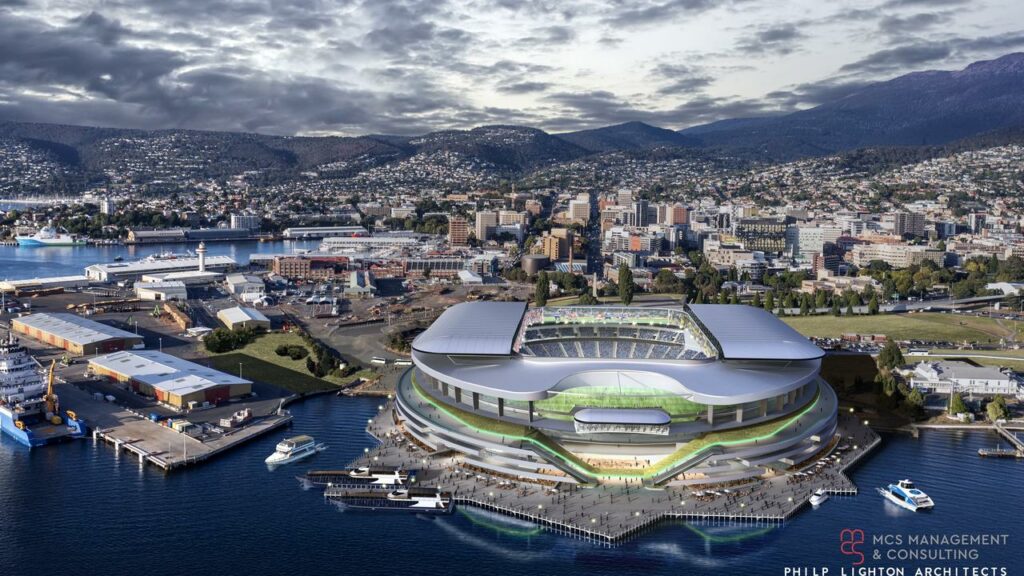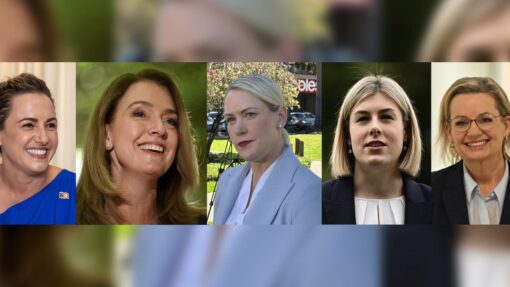Tasmania’s lengthy battle for AFL inclusion
Ethan James |

The first Aussie Rules club in Tasmania was formed in the mid-1860s in suburban Hobart.
This weekend, the final piece of the puzzle in the island’s long quest for inclusion in the national competition will fall into place.
The federal government’s confirmation of $240 million towards a new $715m waterfront stadium in Hobart will pave the way for the AFL to grant Tasmania a 19th league licence.
For footy fanatics, the decision can’t come soon enough.
Tasmania, with a current population of about 540,000, has produced more than 400 AFL or VFL players.
It has four of 32 players with the honour of legend status in the AFL Hall of Fame – Darrel Baldock, Royce Hart, Peter Hudson and Ian Stewart.
Former Geelong president Colin Carter’s report to the AFL commission in 2021 analysing the prospect of a Tasmanian side found the overall case was strong.
He said the state had a long football history but the sport’s position was under threat.
“Our game has only survived for 150 years because of the commitment of people living in the four southern states of Australia,” Carter said.
“Three of those four states are represented in our ‘national competition’ but Tasmania is not.”
That position is under further pressure after the emergence of the JackJumpers in the National Basketball League – the team made the grand-final series in their first season.
Hobart-born Richmond veteran and three-time premiership winner Jack Riewoldt was part of a campaign pushing for a stand-alone AFL side.
“The goal of playing AFL football has probably become harder for young Tasmanians,” he told the Believe Tasmania podcast last year.
“If it’s on the doorstep, these kids are going to have a goal.”
There have been many half-starts along the way.
The state government in 1994 had a plan for a Tasmanian side, including a 30,000-seat stadium in Glenorchy, in Hobart’s north.
Another bid, which had confectionary company Mars on board as a sponsor, was launched in 2008 despite the AFL stating it preferred the Gold Coast and western Sydney.
In 2014, current AFL chief executive and then-deputy, Gillon McLachlan, said he supported a team in Tasmania but it would not happen for at least a decade.
The current bid first had legs in 2019 when the state government set up a taskforce to push the case.
One argument against a side has been that the island’s parochial north and south divide would get in the way of a united purpose.
Four-time premiership-winning coach Alastair Clarkson, an advisor to the taskforce, disagrees.
“I can guarantee you one thing … once you put a flag on the hill and say ‘hey we’re going to be a Tasmanian team’, guess what? That whole passion goes to the one entity,” he told the podcast.
It is proposed a Tasmanian side would play four matches a season at University of Tasmania Stadium in the northern city of Launceston.
The 19,500-capacity stadium is slated to be upgraded as part of the bid.
Carter said Tasmania’s exclusion was a somewhat recent phenomenon which occurred when interstate football was replaced in the 1980s by the club-based national competition.
The Tasmanian Football League grand final in 1979 between Glenorchy and Clarence attracted a crowd of almost 25,000 – about 15 per cent of Hobart’s population at the time.
Glenorchy has fallen on harder times recently, struggling to get numbers to field a side this season.
Four-time Hawthorn premiership winner and former coach of Sydney, the Western Bulldogs and Gold Coast, Rodney Eade, was recruited from Glenorchy as a teenager.
“Tasmania has been fighting for a long time to get a licence,” he told The Mercury newspaper this week.
“With local footy struggling, hopefully this can generate interest in terms of supporters in having their own team to follow.
“(Hopefully it) can help the entire football structure … across the state and it can flourish again.”
While support for a Tasmanian side is widespread, opinion on the new 23,000-seat stadium at Macquarie Point is split.
Many, including the state’s Labor opposition and Greens, plus Liberal and independent MPs at federal level, say the money could be better spent on housing, health and education.
They say the state has been strongarmed into a stadium, which wasn’t originally part of the AFL’s requirements for granting a licence.
Then-premier Peter Gutwein announced in March last year an “aspirational vision” of a stadium at the waterfront.
He was a vocal critic of the AFL’s previous approach to Tasmania, accusing the league of “kicking the can” down the road.
It is proposed a Tasmanian side would enter the league in 2027 and play at Blundstone Arena in Hobart and University of Tasmania Stadium for a season or two before the new venue is finished.
The state government will contribute $12 million per year over 12 years towards a team, $60 million for a high-performance centre, plus $375 million towards the stadium.
The AFL has committed $360 million over a decade, including $90 million in game development and $33 million for player-talent academies.
It will spend $15 million on the stadium, with $85 million to come from borrowings against land sale or lease for commercial uses.
The proposal was originally meant to be voted on by AFL club presidents late last season.
AAP


